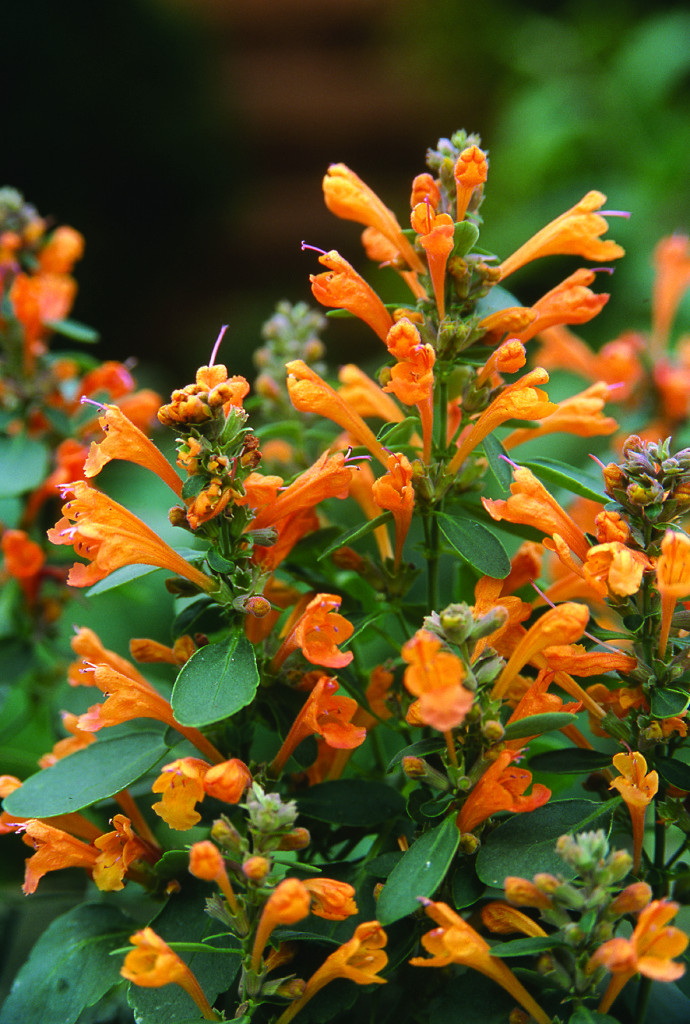
Crop Culture Report: Agastache Arizona Series
Agastache, also known by the common names of Hyssop or Hummingbird Mint, is a genus of the Lamiaceae family. There are many different species of agastache that are native to North America, as well as one species that is native to Eastern Asia.
Takii’s new Arizona series features three hybrid varieties (Sun, Sunset and Sandstone) derived from species native to North America that are well adapted to the mountainous and arid climates of the Western United States. Agastache is an essential specimen for any pollinator-friendly garden since it is attracts bees, butterflies and hummingbirds. High concentrations of certain characteristic oils in the leaves make the plants unappetizing to insects and deer alike. They fit well into scented gardens, perennial borders and even herb gardens since people can use their leaves for tea and claim that the flowers are edible. This herbaceous perennial series has been proven to be hardy to USDA Hardiness Zone 6 and is currently being tested for hardiness in Zone 5.
During the summer of 2014, Takii sent seed for trialing to 24 sites across the United States to assess the performance of the series in a plethora of climates, including areas that experience significant heat and humidity. The results from these trial sites can be found on the National Plant Trials Database (www.plant
trials.org).
Culture
In terms of production, this crop can be treated like an annual and it will perform like a perennial. Seeds should be sown in a 288-cell plug tray or similar, without vermiculite, and germinated at 65 to 70_ F. After germination, growers can light plugs for four weeks to reduce time to flower during late winter or early spring production. The crop can be finished under ambient light conditions and should be kept in a well ventilated area with generally cool to mild temperatures.
Media
High porosity media is critical to a successful crop. Media should dry out rapidly and evenly to ensure a more compact finished crop and to prevent fungal infection of the roots, stem and lower leaves during production.
Irrigation
Allow soil to dry thoroughly between each watering.
Fertilization
Calcium and alkalinity are critical to a healthy crop. Avoid watering with an acidic pH as it will result in chlorosis of new growth. Plants grown at the American Takii Inc. facility in Salinas, California, performed very well when fertilized with 200-ppm nitrogen at a pH of 7.6.
Temperature
Best crops grown in Salinas, California were grown outside where nights are cool (40s and 50s), days are mild (60s and 70s), and conditions are generally breezy. Crops also performed very well in unheated high tunnels with good ventilation during the day. Cool nights and good ventilation keep plants from stretching. An ideal temperature range has been noted as 55 to 64_F for production of most southwestern United States Agastache varieties.
Light
Light plugs for four weeks during the darkest months of the year to promote earlier flowering. It took 10 weeks from sow to first flower to be observed in Salinas, California when plugs were lit for four weeks in December/January and finished under ambient light conditions.
Pinching
Pinching is not necessary, but has been shown to increase the spread of the crop and will result in more flower spikes simultaneously flowering at finish. Pinching during the young plant stage will only delay flowering by about a week. Crops that are not pinched will still develop numerous axillary inflorescences but the main inflorescence will begin to flower several days before the axillary inflorescences begin to flower.
Insects & Disease
Agastache has generally low insect pressure due to certain oils that are produced at high concentrations in the leaves that are unappealing to many insects. Even though there are no specific insect problems noted for this series, a preventive spray program will guarantee best the results as with any crop. Agastache also has low fungal pressure when grown in conditions with good ventilation in a high porosity media that dries thoroughly and rapidly between waterings. Botrytis and downy mildew are the most common fungal pathogens when conditions are favorable for fungal infection.


 Video Library
Video Library 




















